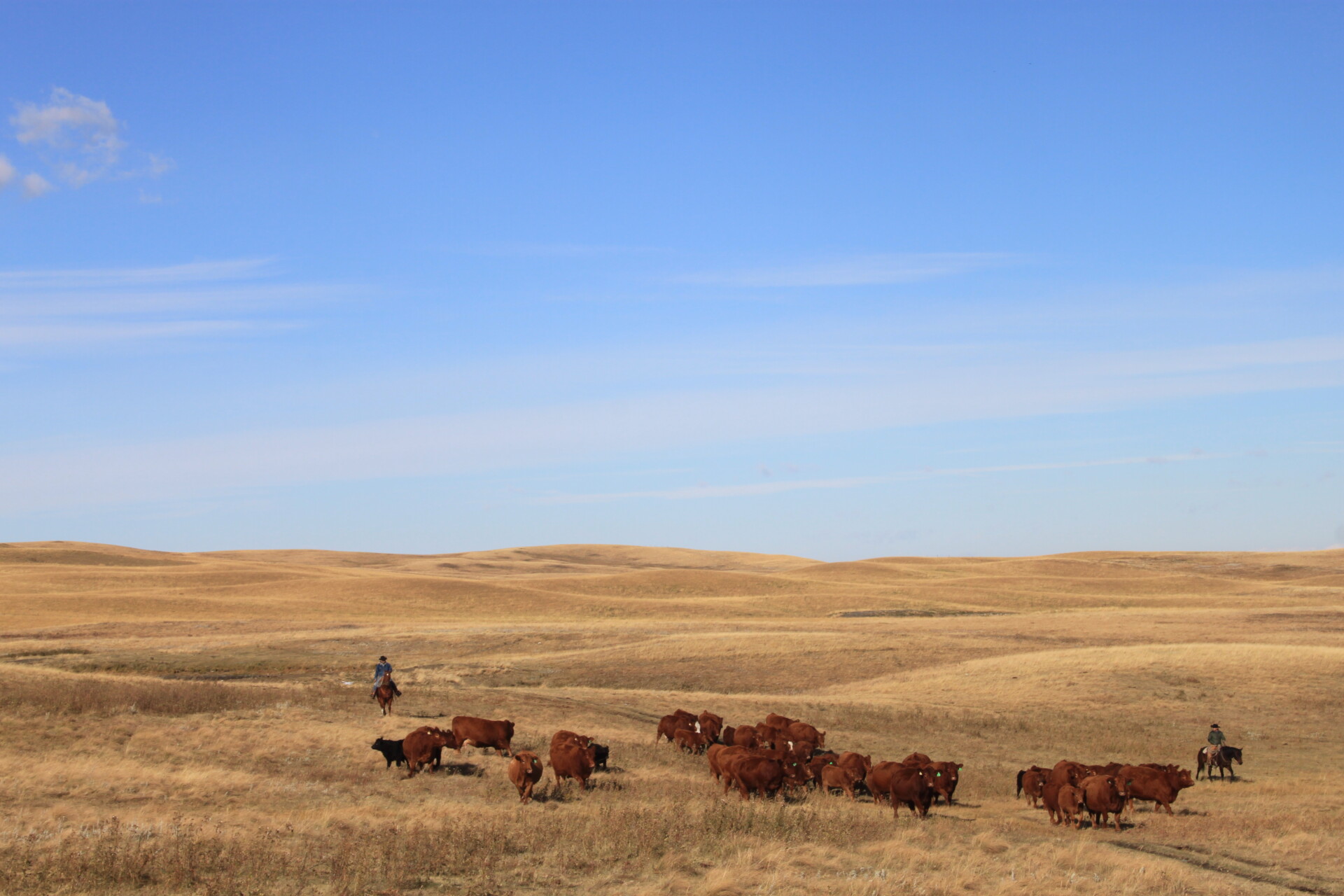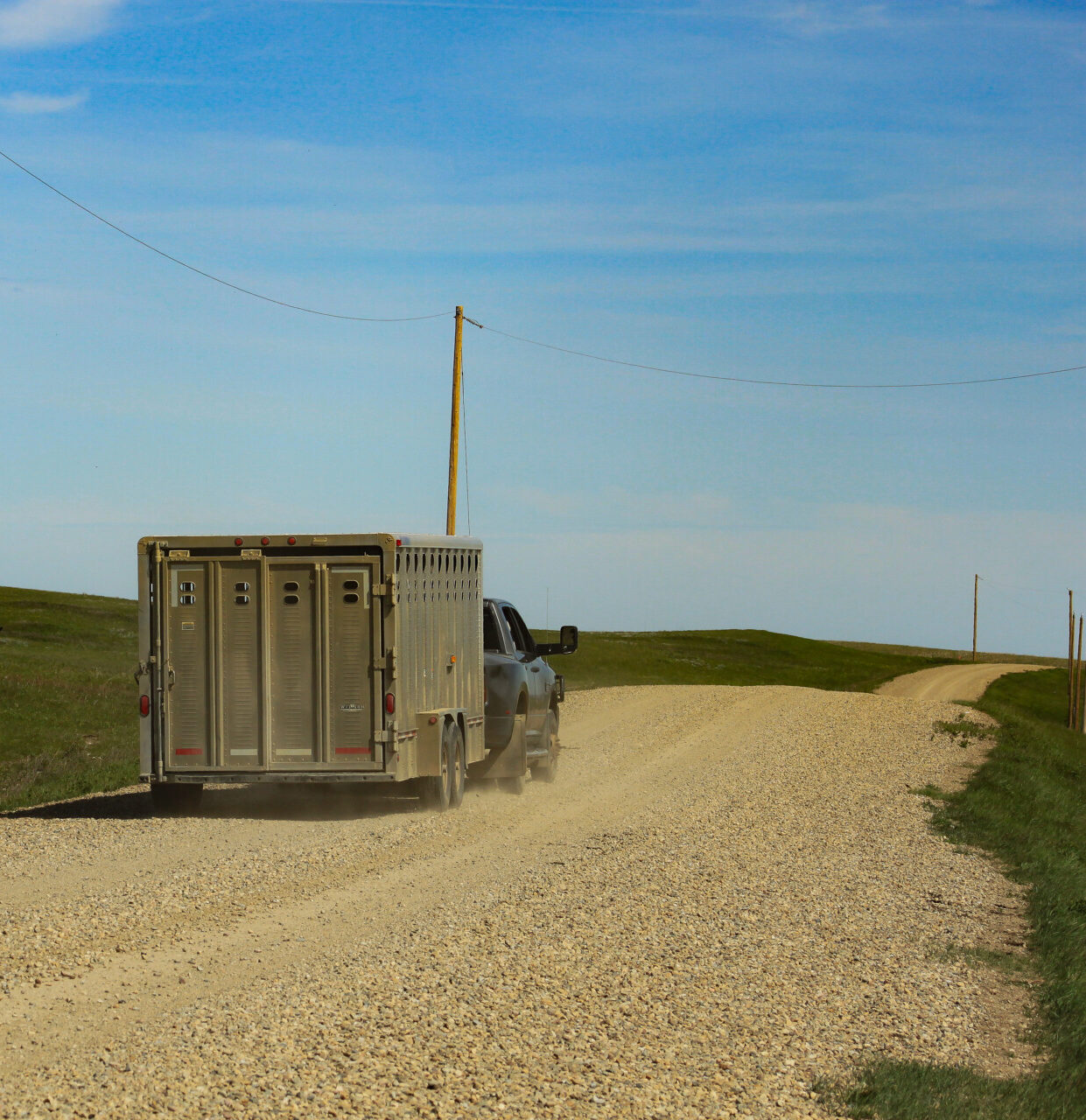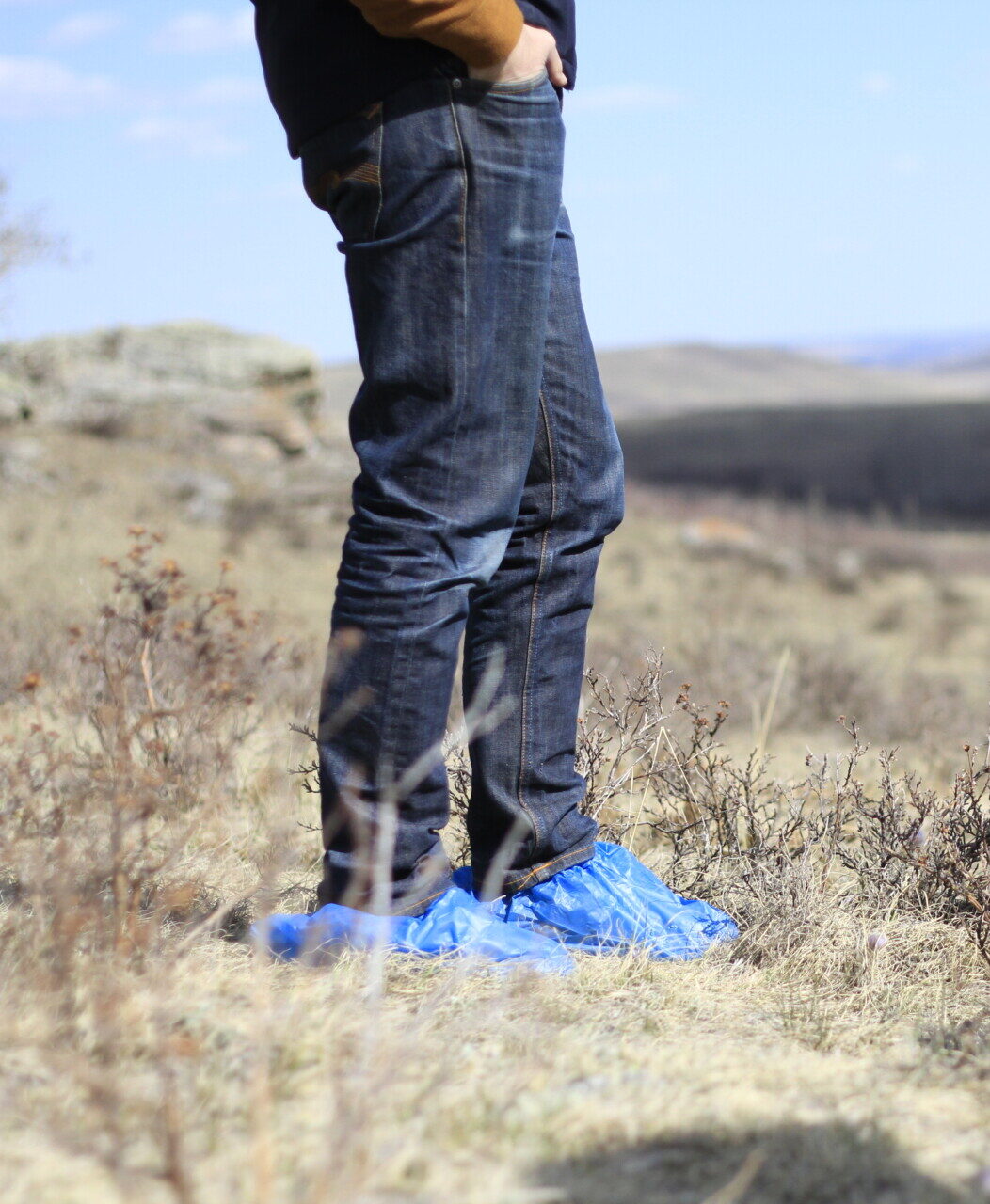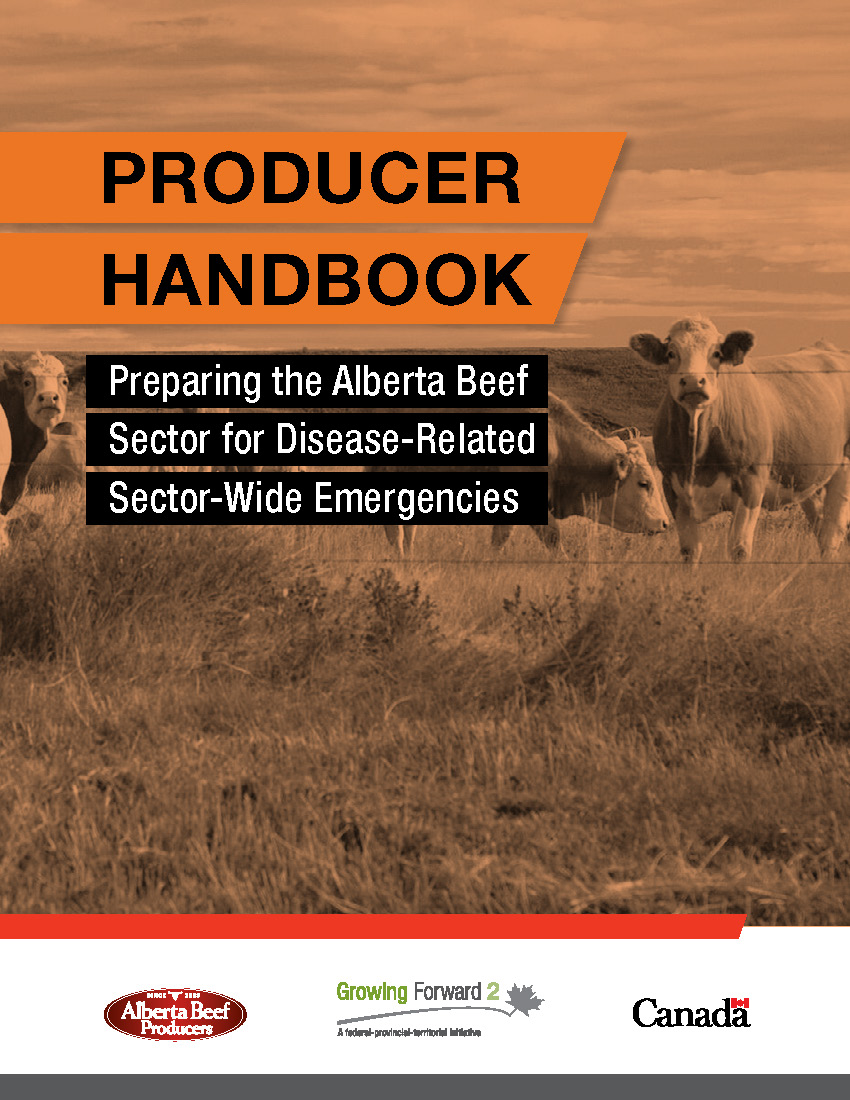Welcome to our Producer Resource Page!
This comprehensive hub draws on valuable insights and information from the Beef Cattle Research Council, the Governments of Alberta and Canada, the Canadian Food Inspection Agency, and other reputable sources. Find tools and knowledge needed to enhance your operation and ensure the highest standards of beef production.
Here you’ll find information and quick links on:
Agronomy | Alberta Beef | Animal Care | Animal Health | Business Management | Emergency Preparedness | Human Health | Stewardship | Traceability
Agronomy
There are a number of great resources to help producers understand the agronomy behind their operations – from the nutritive value of feed to the best ways to manage the land.
Look to the BCRC for up-to-date recommendations on everything from forage and grassland productivity and record keeping to calculating carrying capacity and evaluating feed test results.
Also check out CowBytes, a ration-balancing software that allows Canadian beef cattle producers to formulate their own feed rations. The software is available for $60 at CowBytes.ca.
Drought
- Drought Management Strategies – Beef Cattle Research Council
- Agriculture Moisture Update – Government of Alberta
- Climate and Atlas Maps – Government of Alberta

Feed Testing
Feed testing is an important tool in feed management, enabling managers to develop appropriate rations, mitigate the risk of toxicity or deficiency, and economize feeding.
It’s important to collect a feed sample that is representative of the feed ingredient(s) being tested. It’s also important to take the sample as close to feed or selling as possible.
Learn about how to collect representative samples, and why feed testing is so important via the BCRC’s Feed quality, testing and analysis for beef cattle.
Alberta Beef
Alberta Beef is a consumer branded product, and as such is driven and supported by consumers. Alberta Beef Producers has promoted Alberta Beef for over 30 years and the brand is widely used by retail and food service establishments in Alberta and other parts of Canada.
Read more about how we define Alberta Beef and the Canadian Beef Advantage
The Alberta Meat Inspection Act and Meat Inspection Regulation outline the requirements that all provincial licence holders must meet, including assurances that meat and meat products are safe and that animals are handled humanely at slaughter.
Beef sold in Alberta must be inspected.
The Alberta government issues licenses for different types of slaughter operations, including inspected as well as uninspected operations.
Uninspected meat is only for consumption by the animal owner and their household; it is not for sale or further distribution.
Animal Care
The Code of Practice for the Care and Handling of Beef Cattle provides guidelines on housing, feeding, transportation, and health management to ensure the welfare of beef cattle in Canada. Developed by the National Farm Animal Care Council (NFACC), it incorporates the latest scientific knowledge and industry practices.
The Code incorporates information on environmental conditions; feed and water; animal health; animal husbandry; transportation; and on-farm euthanasia.

Emergency Slaughter
On-farm emergency slaughter options in Alberta ensure both the humane treatment of animals and the alignment with the provincial Meat Inspection Act.
Video Ante-Mortem Inspection (VAMI)
The Video Ante-Mortem Inspection (VAMI) program allows for an ante-mortem inspection by video for animals that cannot be transported to an abattoir so that they may be humanely slaughtered on site.
On-Farm Slaughter Operation Licence
All meat resulting from slaughter under an On-Farm Slaughter Operation (OFSO) Licence is uninspected. It must be returned to the owner(s) of the animal for consumption by their household(s) only and cannot be sold gifted, bartered or otherwise transferred. Selling uninspected meat remains illegal in Alberta. The number of customers of a live animal depends on the size of the animal.
Mobile Butcher Licence
The Mobile Butcher Licence enables a mobile butcher to slaughter an individual’s animal on the individual’s land. The meat is uninspected and is only for consumption by the animal’s owner and members of their immediate household; it is not for sale or further distribution.

Transportation
Recognizing when an animal may be transported, transported with special provisions directly to a veterinarian or to an abattoir, or is unfit for transport, is important to ensure the best standards of animal care.
If an animal is unfit for transport, it may be salvageable through on-farm emergency slaughter.
Animal Health
Effective animal health management for cattle operations is crucial for maintaining herd productivity and welfare.
Producers can access valuable information through ABP Daily’s online articles on health and production and through the quarterly print magazine, which covers a range of animal health topics.
Establishing a strong vet-client relationship is essential for producers, who should consider working alongside their vet to develop tailored herd health plans and protocols for different health scenarios.
Check out:
- BCRC’s Animal Health, Welfare and Antimicrobial Resistance
- Government of Alberta’s Resources for Cattle Owners
Body Condition Scoring
The productivity of beef cows depends largely on the amount of fat they carry. A herd of cows maintained in the right condition with an ideal layer of fat cover will have more (and heavier) calves than a herd of thin or over-fat cows.

Disease
Foreign Animal Disease (FAD) can have a devastating effect on the health and welfare of livestock and on the economic viability of livestock operations.
We all must do our part.
Learn more about biosecurity via this dedicated page from the Beef Cattle Research Council.
Then, have a look through some of these incredible resources:
Business Management
Effective business management for cattle operations involves strategic planning, efficient resource allocation, and staying informed about market trends.
Producers can benefit from regular market updates on ABP Daily, where ABP provides the latest prices, trends, and insights for Alberta’s cattle market.
- Current Markets and Forecasts (including weekly Canfax reports)
- Cattle Report (including daily Canfax updates)
Additionally, the BCRC offers a wealth of resources, including research articles, interactive tools, and webinars that cover various aspects of cattle production and management.
You might also consider checking out applied research organizations, which often host workshops and webinars, providing valuable information and practical solutions tailored to regional needs. Find a local organization via the Agricultural Research and Extension Council of Alberta.
Human Health
Recognizing the link between mental health and productivity in farming is crucial. The repercussions of mental health struggles not only affect producers themselves but can ripple through our families and communities, creating a difficult-to-break cycle. Compassionate agriculture advocates and organizations are available.
If you or someone you know needs help, reach out. There are many resources, some designed specifically for those in the demanding world of agriculture.
National Crisis and Support Lines
- If you are in crisis, call 911 or visit your local emergency department.
- If you or someone you know is thinking of suicide, call or text 988. Learn More
- If you need support, but don’t know where to go, dial or text 211. Learn More
Emergency Preparedness
As a rural Albertan you need to protect your animals from risks posed by natural disasters and other emergencies including: collapsed barns, extreme weather, flooding, and dehydration.
While emergencies are nearly impossible to predict, there are things you can do to minimize the impact. We all have a role to play in protecting and strengthening our industry. As industry experts, with boots in the dirt, producers and their staff are the first line of defense in an emergency situation.

Stewardship
Stewardship, as defined by the Canadian Roundtable for Sustainable Beef (CRSB), involves the responsible management of resources to ensure environmental, social, and economic sustainability in beef production.
This broad topic encompasses various practices aimed at conserving land, water, and air quality, as well as promoting animal welfare and community well-being.
In this section, we will focus on resources with an environmental emphasis, providing producers with tools and information to enhance their stewardship efforts.
Antimicrobial Stewardship
Waste Management
Chemicals and Medications
Manure
Plastic
Government of Alberta: Management and recycling of agricultural plastics
Agricultural Plastics Recycling Group
Cleanfarms: Alberta Ag-Plastic. Recycle It! pilot program
Mortalities
Government of Alberta: Disposal of Dead Animals Regulation
Water Management
In Alberta, Alberta Environment and Protected Areas utilizes the Digital Regulatory Assurance System (DRAS). This includes:
- Water Act approval and approval amendment applications,
- Water Act licence applications (surface water or groundwater), and applications for licence amendments, renewals, transfers and amalgamations,
- new Water Act temporary diversion licence (TDL) applications (surface water or groundwater), and TDL amendment applications, and
- Water Act code of practice notifications.
For information on water management as it relates to environmental stewardship, visit:
- Government of Alberta’s list of water supply resources for livestock managers.
- BCRC’s riparian management and assessment information.
Wildlife
For cattle producers, relationships with wildlife are nuanced. Wildlife can contribute to biodiversity and ecosystem health. They can also cause challenges such as grazing competition, disease transmission, and damage to infrastructure.
Wintering sites
Wintering sites play a crucial role in environmental stewardship for cattle operations. Properly managed wintering sites help minimize the risk of water contamination from runoff carrying nutrients, pathogens, and sediments.
By carefully selecting and managing wintering sites, cattle producers can balance production efficiencies with environmental sustainability, ensuring the health of their land and water resources.
Traceability
Traceability is the ability to follow the movement of an animal or food product through different stages of the supply chain. Livestock traceability systems are essential, effective tools that can help mitigate the risks and impact during an emergency or disease outbreak, thereby limiting economic, environmental and social impacts of disease outbreaks, food safety issues and natural disasters.
- Overview of livestock traceability in Canada
- Canadian Cattle Identification Agency (CCIA)
- Identification and traceability guide for operators of livestock sites
- Livestock Traceability in Alberta
- PIDs in Alberta
- Livestock Identification Services Ltd. (LIS)
Livestock traceability is a collaborative effort that integrates federal, provincial and territorial governments with industry.
Overview of livestock traceability in Canada
Under the authority of the Health of Animals Act and regulations, the Canadian Food Inspection Agency (CFIA) oversees a national livestock traceability program.
The Identification and traceability guide for operators of livestock sites offers more information. It was built as part of a consultation on proposed amendments to Part XV of the Health of Animals Regulations – Identification and Traceability. The consultation ran from March 18, 2023 to June 16, 2023. The documents linked here will be updated with the final regulations published in Canada Gazette, Part II, expected in the first quarter of 2026. The new regulations are expected to incorporate more stringent animal and carcass movement reporting, provide consistency to PID requirements across the country, and repeal individual site recordkeeping requirements.
Livestock Traceability in Alberta
Traceability relies on three fundamental pillars:
Premises Identification (PID)
The Government of Alberta oversees PIDs in the province, which are required for medication purchases, animal movement documents, livestock sales at auction markets, and certain government grant applications.
In Alberta, if you own a livestock animal (including equine) or poultry and that animal is kept at a premises other than a commingling site, you need to apply for a PID Account and obtain at least one PID Number associated with where the animal(s) are located. If you operate a commingling site (e.g. a stable, community pasture, fair ground, etc.), you are required to obtain a PID Account, register all your commingling sites and provide the PID Number(s) to the users of your site(s).
Keep your PID up to date! Ensuring that your PID information is current and accurate allows you to be contacted quickly in the event of a natural disaster, evacuation order, or disease event.
Animal Identification
All cattle must be identified with an approved Canadian Cattle Identification Agency (CCIA) radio frequency identification (RFID) tag. Tags for beef cattle can be purchased directly from CCIA or from CCIA-approved tag dealers across Canada.
Animal Movement
An Alberta Livestock Manifest is required to transport or drive cattle within Alberta and to inspection sites such as livestock markets, livestock assembly stations, feedlots and abattoirs. Cattle owners require a Livestock Identification Services Ltd. (LIS) Livestock Permit to document the movement of cattle to a destination outside the province as well as when cattle leave an inspection site. LIS Special Permits are used to transport cattle more than once in a calendar year, both within and outside of Alberta. There are exceptions to the manifest requirement if moving cattle on foot less than 30 km to a destination that is not a community pasture, inspection site or forest reserve, if the livestock are accompanied by a Livestock Permit or a Special Permit, or if the they are transported within Alberta to receive veterinary care and are returning to point of origin.
Cattle born in Alberta in 2009, or later, need to be age verified in the CCIA database called the Canadian Livestock Tracking System (CLTS). CLTS should also be updated with the new tag number when a tag is replaced on a live animal or if an animal dies on farm by retiring that tag number.
It is good record-keeping practice to associate CCIA tag numbers with other forms of individual animal identification such as management tags, and to get in the habit of submitting animal movements to CLTS prior to the new regulations coming into force. This information greatly speeds up the tracing of animals during disease investigations.